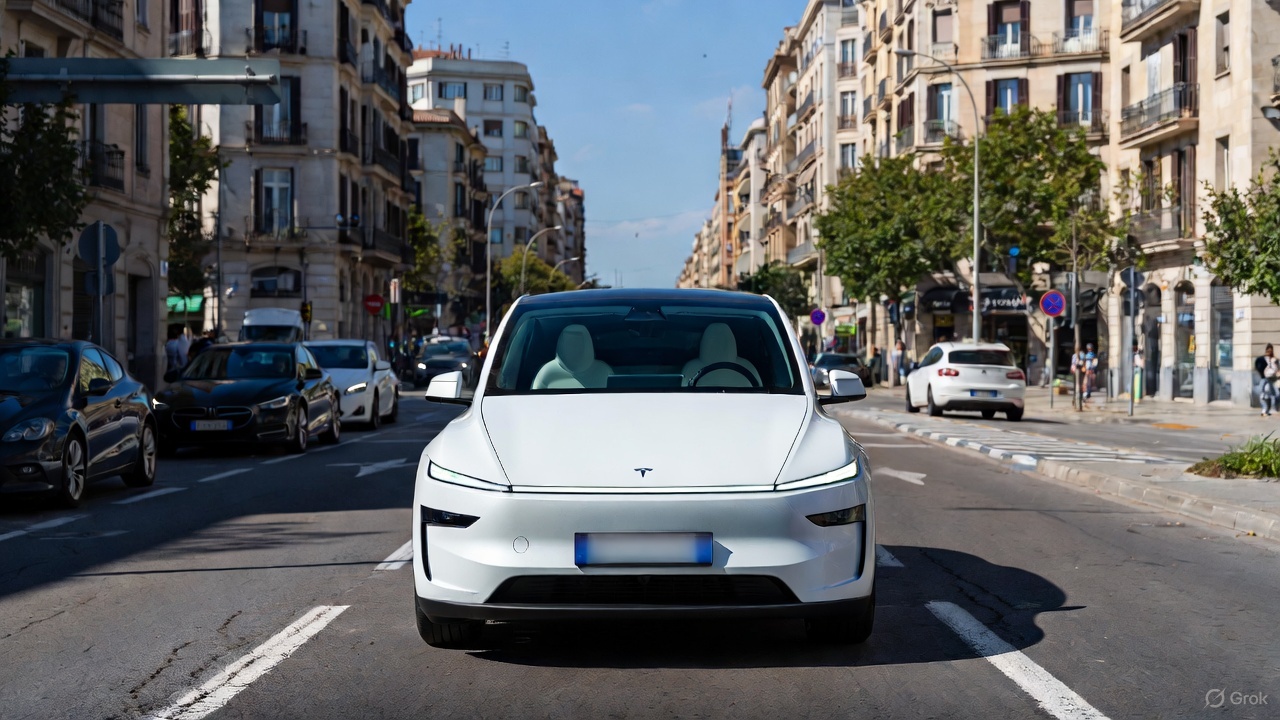

News
SpaceX Crew Dragon switches ports to make room for Boeing’s Starliner do-over
Update: For the second time, a SpaceX Crew Dragon spacecraft has successfully swapped International Space Station (ISS) docking ports in orbit – this time to make way for Boeing’s planned Starliner Orbital Test Flight do-over.
If Starliner’s second orbital flight test is more successful than the first, which failed almost immediately after launch, the Boeing spacecraft will launch no earlier than July 30th, rendezvous and dock with the ISS, and spend approximately five days at the station before attempting to return to Earth. Once Starliner departs, freeing up the forward docking port, SpaceX and NASA will likely have to perform a second Crew-2 port relocation, moving Dragon back to its original port to set the stage for the CRS-23 Cargo Dragon resupply mission scheduled in late August.
SpaceX and NASA are on track for the Crew-2 Dragon spacecraft currently docked to the International Space Station (ISS) to perform a “port relocation” maneuver early Wednesday, effectively opening the door for Boeing’s Starliner flight test do-over.
Scheduled to launch on a United Launch Alliance (ULA) Atlas V rocket no earlier than (NET) July 30th, Boeing’s Starliner will be flying for the first time since the spacecraft’s near-catastrophic Orbital Flight Test (OFT) debut in December 2019. During Starliner’s inaugural test flight, a combination of inept Boeing software development, shoddy quality control, and inexplicably lax NASA oversight allowed the spacecraft to launch with inoperable software.
As a result, things went wrong mere seconds after Atlas V – which performed nominally – deployed Starliner. Almost as simple as using the wrong clock, the first software fault – something that would have been instantly caught with even the most rudimentary integrated systems test – caused Starliner to think it was in a different part of the OFT mission and waste much of its fuel with thousands of unnecessary thruster firings.
Aside from pushing Starliner’s maneuvering thrusters beyond their design limits, those unplanned and unexpected misfirings also threw the spacecraft off course, obfuscating Boeing and NASA’s ability to communicate and command the spacecraft and troubleshoot the situation at hand. Eventually, the company regained control of Starliner, but not before it had burned through most of its propellant reserves – precluding plans for to rendezvous and dock with the ISS.
Less than three hours before reentry, Boeing also uncovered a separate thruster-related software issue that could have caused the Starliner capsule to lose stability and re-impact its expendable trunk section after separation.
Ultimately, with so many issues and a failure to gather any kind of data related to operations at and around the ISS, NASA thankfully forced Boeing to plan to repeat OFT with Orbital Flight Test 2 (OFT-2). Scheduled to launch in December 2020 as of the second half of that year, OFT-2 ultimately slipped – both for scheduling and technical reasons – to March, June, and finally July 30th, 2021.

More than 19 months after Starliner’s ill-fated debut, NASA and Boeing are now almost ready for the spacecraft’s critical do-over. For unknown reasons, though, NASA and/or Boeing apparently need (or prefer) Starliner to use a specific docking port – the same port SpaceX’s second operational Crew Dragon spacecraft is currently docked to. According to NASA and Boeing, Starliner needs to use that forward docking port because it has not been qualified for zenith docking, which is a bit more complex. As a result, SpaceX and NASA have scheduled a port relocation maneuver around 7am EDT (UTC-4) on Wednesday, July 21st.
SpaceX’s first relocation occurred in early April to prepare for the arrival of a second Crew Dragon later that month. When Crew-1 Dragon departed a few weeks after the maneuver, it would leave the station’s zenith (space-facing) port free for a Cargo Dragon 2 spacecraft scheduled to arrive around one month later. Due to the station’s geometry and port layout, only the zenith port allows its robotic Canadarm2 arm to unload unpressurized cargo from Dragon’s trunk.
Already at the forward port, the Crew-2 Dragon will thus be moving to the zenith port for Starliner’s brief 1-2 week stay at the ISS. However, as may have become clear, Crew Dragon will then have to re-relocate to the forward port for any future Cargo Dragon missions – one of which happens to be scheduled to launch with an important unpressurized payload as early as August 29th.
Regardless of why, it’s hard to ever complain about seeing Dragons fly. Tune in around 6:30 am EDT (10:30 UTC) to watch Crew Dragon C206 maneuver around an orbital space station.

Elon Musk
SpaceX’s Starship FL launch site will witness scenes once reserved for sci-fi films
A Starship that launches from the Florida site could touch down on the same site years later.

The Department of the Air Force (DAF) has released its Final Environmental Impact Statement for SpaceX’s efforts to launch and land Starship and its Super Heavy booster at Cape Canaveral Space Force Station’s SLC-37.
According to the Impact Statement, Starship could launch up to 76 times per year on the site, with Super Heavy boosters returning within minutes of liftoff and Starship upper stages landing back on the same pad in a timeframe that was once only possible in sci-fi movies.
Booster in Minutes, Ship in (possibly) years
The EIS explicitly referenced a never-before-seen operational concept: Super Heavy boosters will launch, reach orbit, and be caught by the tower chopsticks roughly seven minutes after liftoff. Meanwhile, the Starship upper stage will complete its mission, whether a short orbital test, lunar landing, or a multi-year Mars cargo run, and return to the exact same SLC-37 pad upon mission completion.
“The Super Heavy booster landings would occur within a few minutes of launch, while the Starship landings would occur upon completion of the Starship missions, which could last hours or years,” the EIS read.
This means a Starship that departs the Florida site in, say, 2027, could touch down on the same site in 2030 or later, right beside a brand-new stack preparing for its own journey, as noted in a Talk Of Titusville report. The 214-page document treats these multi-year round trips as standard procedure, effectively turning the location into one of the world’s first true interplanetary spaceports.
Noise and emissions flagged but deemed manageable
While the project received a clean bill of health overall, the EIS identified two areas requiring ongoing mitigation. Sonic booms from Super Heavy booster and Starship returns will cause significant community annoyance” particularly during nighttime operations, though structural damage is not expected. Nitrogen oxide emissions during launches will also exceed federal de minimis thresholds, prompting an adaptive management plan with real-time monitoring.
Other impacts, such as traffic, wildlife (including southeastern beach mouse and Florida scrub-jay), wetlands, and historic sites, were deemed manageable under existing permits and mitigation strategies. The Air Force is expected to issue its Record of Decision within weeks, followed by FAA concurrence, setting the stage for rapid redevelopment of the former site into a dual-tower Starship complex.
SpaceX Starship Environmental Impact Statement by Simon Alvarez
News
Tesla Full Self-Driving (FSD) testing gains major ground in Spain
Based on information posted by the Dirección General de Tráfico (DGT), it appears that Tesla is already busy testing FSD in the country.

Tesla’s Full Self-Driving (Supervised) program is accelerating across Europe, with Spain emerging as a key testing hub under the country’s new ES-AV framework program.
Based on information posted by the Dirección General de Tráfico (DGT), it appears that Tesla is already busy testing FSD in the country.
Spain’s ES-AV framework
Spain’s DGT launched the ES-AV Program in July 2025 to standardize testing for automated vehicles from prototypes to pre-homologation stages. The DGT described the purpose of the program on its official website.
“The program is designed to complement and enhance oversight, regulation, research, and transparency efforts, as well as to support innovation and advancements in automotive technology and industry. This framework also aims to capitalize on the opportunity to position Spain as a pioneer and leader in automated vehicle technology, seeking to provide solutions that help overcome or alleviate certain shortcomings or negative externalities of the current transportation system,” the DGT wrote.
The program identifies three testing phases based on technological maturity and the scope of a company’s operations. Each phase has a set of minimum eligibility requirements, and applicants must indicate which phase they wish to participate in, at least based on their specific technological development.

Tesla FSD tests
As noted by Tesla watcher Kees Roelandschap on X, the DGT’s new framework effectively gives the green flight for nationwide FSD testing. So far, Tesla Spain has a total of 19 vehicles authorized to test FSD on the country’s roads, though it would not be surprising if this fleet grows in the coming months.
The start date for the program is listed at November 27, 2025 to November 26, 2027. The DGT also noted that unlimited FSD tests could be done across Spain on any national route. And since Tesla is already in Phase 3 of the ES-AV Program, onboard safety operators are optional. Remote monitoring would also be allowed.
Tesla’s FSD tests in Spain could help the company gain a lot of real-world data on the country’s roads. Considering the scope of tests that are allowed for the electric vehicle maker, it seems like Spain would be one of the European countries that would be friendly to FSD’s operations. So far, Tesla’s FSD push in Europe is notable, with the company holding FSD demonstrations in Germany, France, and Italy. Tesla is also pushing for national approval in the Netherlands in early 2026.
News
Tesla FSD V14.2.1 is earning rave reviews from users in diverse conditions
Tesla’s Full Self-Driving (Supervised) software continues its rapid evolution, with the latest V14.2.1 update drawing widespread praise.

Tesla’s Full Self-Driving (Supervised) software continues its rapid evolution, with the latest V14.2.1 update drawing widespread praise for its smoother performance and smarter decision-making.
Videos and firsthand accounts from Tesla owners highlight V14.2.1 as an update that improves navigation responsiveness, sign recognition, and overall fluidity, among other things. Some drivers have even described it as “more alive than ever,” hinting at the system eventually feeling “sentient,” as Elon Musk has predicted.
FSD V14.2.1 first impressions
Early adopters are buzzing about how V14.2.1 feels less intrusive while staying vigilant. In a post shared on X, Tesla owner @LactoseLunatic described the update as a “huge leap forward,” adding that the system remains “incredibly assertive but still safe.”
Another Tesla driver, Devin Olsenn, who logged ~600 km on V14.2.1, reported no safety disengagements, with the car feeling “more alive than ever.” The Tesla owner noted that his wife now defaults to using FSD V14, as the system is already very smooth and refined.
Adverse weather and regulatory zones are testing grounds where V14.2.1 shines, at least according to testers in snow areas. Tesla watcher Sawyer Merritt shared a video of his first snowy drive on unplowed rural roads in New Hampshire, where FSD did great and erred on the side of caution. As per Merritt, FSD V14.2.1 was “extra cautious” but it performed well overall.
Sign recognition and freeway prowess
Sign recognition also seemed to show improvements with FSD V14.2.1. Longtime FSD tester Chuck Cook highlighted a clip from his upcoming first-impressions video, showcasing improved school zone behavior. “I think it read the signs better,” he observed, though in standard mode, it didn’t fully drop to 15 mph within the short timeframe. This nuance points to V14.2.1’s growing awareness of temporal rules, a step toward fewer false positives in dynamic environments.
FSD V14.2.1 also seems to excel in high-stress highway scenarios. Fellow FSD tester @BLKMDL3 posted a video of FSD V14.2.1 managing a multi-lane freeway closure due to a police chase-related accident. “Perfectly handles all lanes of the freeway merging into one,” the Tesla owner noted in his post on X.
FSD V14.2.1 was released on Thanksgiving, much to the pleasant surprise of Tesla owners. The update’s release notes are almost identical to the system’s previous iteration, save for one line item read, “Camera visibility can lead to increased attention monitoring sensitivity.”









